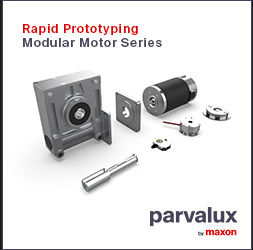Natural exoskeletons provide animals such as spiders and insects with protection, structural support, and an area to attach muscles for powerful movement. Artificial exoskeletons can provide humans with protection from physical strain and enhanced strength in the workplace.
 Occupational Exoskeletons Increase Performance on the Factory Floor
Occupational Exoskeletons Increase Performance on the Factory Floor

Stewart Goulding, Managing Director | Electro Mechanical Systems
To stay ahead of competitors, manufacturers must get their products from components at the factory to complete ready-to-sell pieces without hold-up. Automation has been widely adopted to increase manufacturing efficiency, but there are several tasks where the human ability to critically assess and respond to live situations cannot be replaced.
In areas where automating manufacturing processes is not the best option, human efficiency can still be increased. Providing human workers with occupational exoskeletons can help facility managers increase production rate, while also benefiting employee health.
Superior stamina
Occupational exoskeletons are worn by the worker to help them perform certain actions with a higher degree of strength and repeatability, or with less physical strain. An external mechanical frame is attached to various parts of the body such as the arms for repetitive assembly tasks, the legs for lifting heavy loads and the back for osteo and muscular support. The exoskeleton can provide a proportion of the effort required to carry out a task, therefore lowering the amount of exertion needed from the wearer.
With each movement requiring less energy, human workers can perform for longer, displaying increased endurance. This decreased physical fatigue offered by the skeletal support also gives the wearer heightened concentration, as they aren’t distracted by aches and tiredness. This boosts the speed and quality of production, as well as providing better working conditions for employees.
A real life example of occupational exoskeletons increasing worker stamina is the Noone Chairless Chair, which can be fastened to the back of a worker’s legs. Once attached, the shock absorber element behind the lower leg locks in stages when the user wishes to sit down, and releases when the user stands up.
With all weight being led directly to the ground, the user’s legs and back can be rested. The exoskeleton is useful for workers who work stationary for a long period of time, such as those attaching parts to a vehicle.
Powerful performance
As well as increasing endurance, the assistance of an occupational exoskeleton can give the user added strength. With more power provided by the exoskeleton, the user doesn’t have to put in as much physical effort, therefore reducing the chance of injury and strain.
Decreasing the possibility of injury inherently benefits the employee’s wellbeing, but also benefits the company’s production rate, as the employee will require fewer sick days and will be able to provide their best performance.
Repeated gripping and rotating actions, such as those used when welding together aircraft structure parts in aerospace manufacturing, carry a high risk of hand and wrist injury. It’s in these tasks that technology such as the Bioservo Technologies Ironhand can protect workers from injury. The Ironhand uses pressure-sensitive sensors to detect when the user performs a gripping action, then calculates and delivers the necessary extra gripping force.
By aiding the user’s grip, Ironhand can reduce strain, as well as helping the worker hold onto workpieces or tools that are difficult to grasp, such as those that are vibrating or are in cold environments. This makes sure processes can be carried out without wasted time and damage from dropping tools.
Motorised movements
Exoskeletons require motors with fine speed control to deliver the correct amount of power to assist each movement. This is especially true for exoskeletons such as the Ironhand, which require precise hand movements and coordinated movements of the fingers, as well as varying responses to different tasks.
High torque is required in motors for exoskeletons to be able to move parts of the user’s body. Torque is also advantageous for handling large weights when performing lifting tasks such as box shifting. In the Chairless Chair, this is beneficial for quick locking of the seat so the user is supported before they lower too far to the floor.
For all occupational exoskeletons, it’s equally important that the motor has a high power-to-weight ratio. A compact motor ensures the exoskeleton is light to wear and has minimal bulk. Power must be delivered for the entire working day, so high efficiency is essential for a long battery life.
Exoskeleton manufacturers must work with a trusted motor supplier to find a well-rounded motor that exhibits all of these qualities. EMS is the sole UK supplier of FAULHABER motors, which display a superior power-to-weight ratio.
In particular, the FAULHABER BXT motor series is ideally suited to exoskeleton applications. Its flat construction minimises space requirements, while its innovative winding technology allows it to deliver torque up to 134 millinewton metres (mNM).
The motors can be combined with a complementary encoder to achieve precise speed control. They can also be paired with the FAULHABER GPT planetary gearheads to achieve high torque at low speed, allowing the motor to run more efficiently. The GPT range is welded to the motor at the factory with no need for an adapter kit to mount it, which keeps the system compact.
Manufacturers should take inspiration from the protection and enhanced performance animals receive from their exoskeletons. Occupational exoskeletons allow employees to perform with increased stamina and power, while also improving their wellbeing, providing the ultimate blend of man and machine.
The content & opinions in this article are the author’s and do not necessarily represent the views of ManufacturingTomorrow
Comments (0)
This post does not have any comments. Be the first to leave a comment below.
Featured Product

